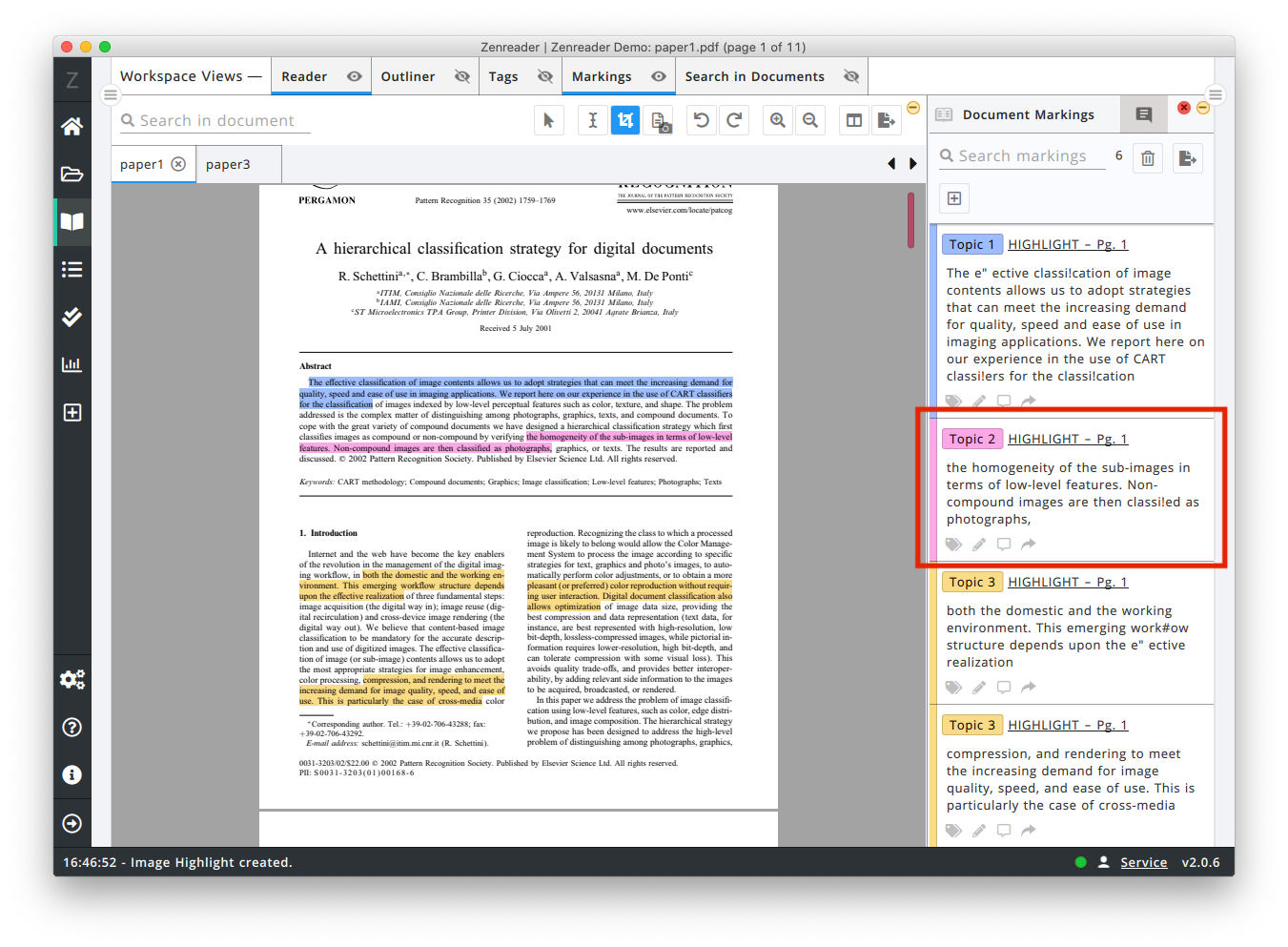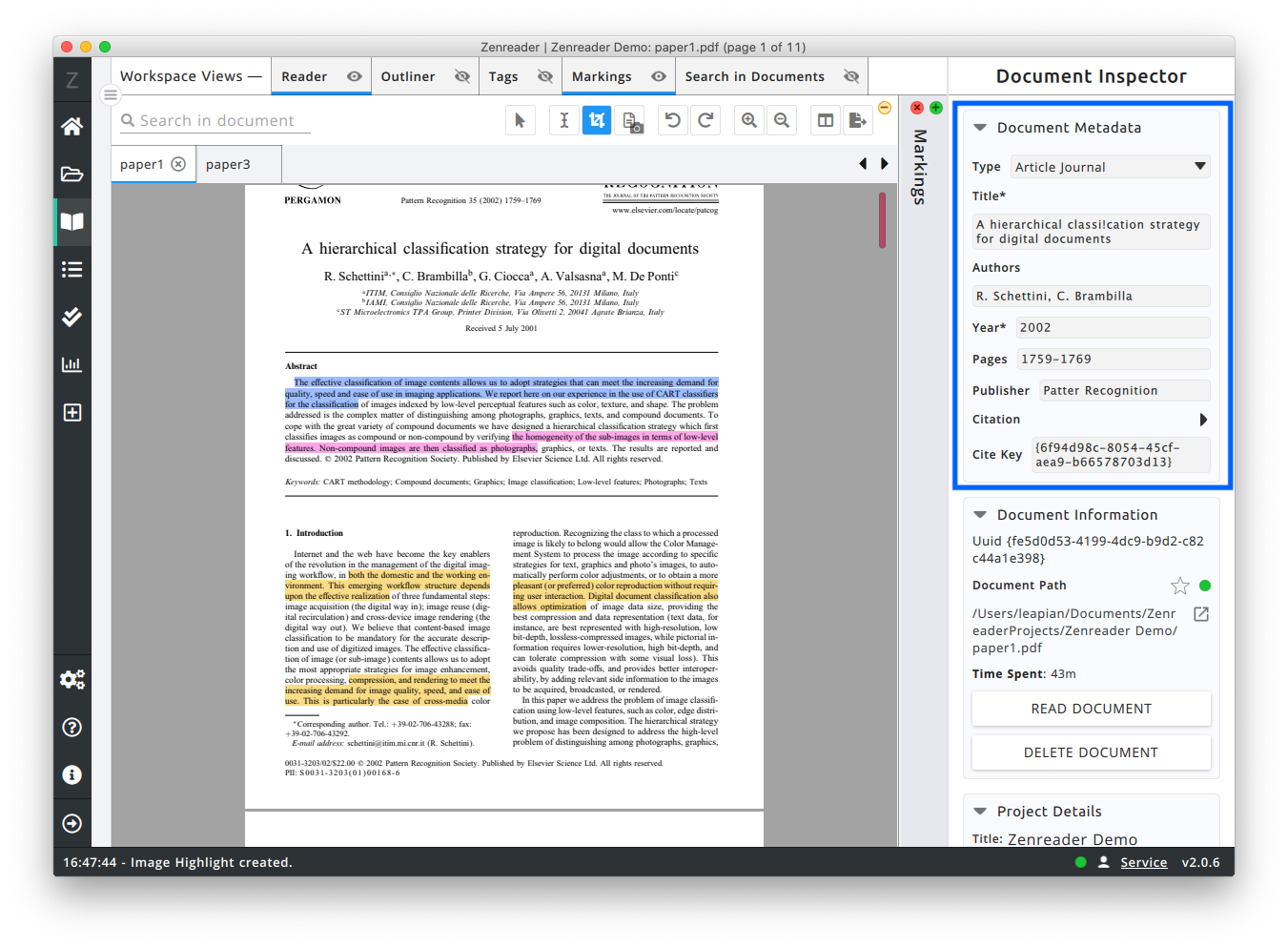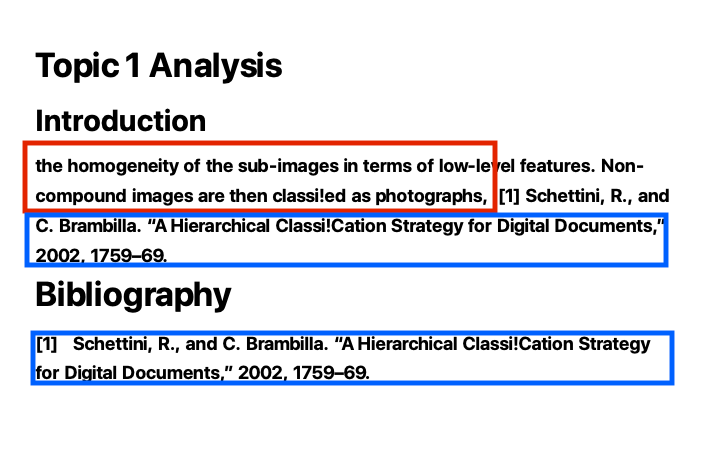Plagiarism
If you steal from one author is plagiarism; if you steal from many it's research [Wilson Mizner].
Plagiarism is the practice of taking someone else's work or ideas and passing them off as one's own (Oxford Dictionary).
There are two forms of plagiarism:
Intentional Plagiarism: when someone knowingly presents someone else’s ideas, research, words and work as his own.
Unintentional Plagiarism: occurs when not giving proper credit for someone’s ideas, research and words when incorporating this in your work. Main sources of unintentional plagiarism:
- Failing to cite your sources correctly
- Not citing paraphrased information
Zenreader significantly diminishes unintentional plagiarism with the following steps:
Step 1: When a highlight is created from a PDF document, Zenreader attaches the bibliographic information to that highlight.
Where possible, the algorithm detects and compiles the metadata of the PDF document automatically. When this is not possible, the bibliographic information can be entered manually.
Step 2: When the highlight is dragged into a note or outline within Zenreader, the bibliographic information is attached with the highlight, even when the text is modified or paraphrased.
Step 3: At the export phase any highlight or extracted information is exported with the corresponding citation automatically embedded in the exported document.
Quotation, Paraphrase, Summary and Analysis
Quotation: the writer can use the original author’s direct words in quotation marks. Most commonly used to make a direct point or as evidence in supporting an idea.
Paraphrase: the writers puts the original author’s words in their own words.
Summary: used as a brief summary of the source’s main points. Only the most important points in the source should appear in the summary.
Analysis: It’s an elaboration by the author on the original source. It allows the writer to express his own observations and ideas born out of his understanding of the original source.



